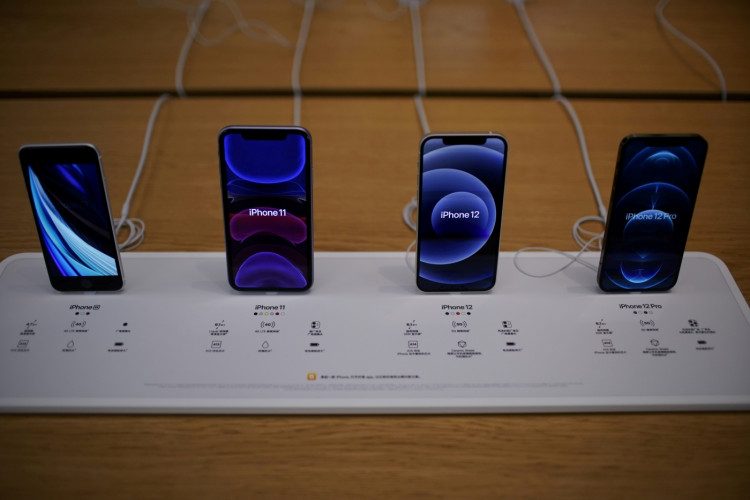In the high-end smartphone market in China, long dominated by Apple, this year has seen increased competition with the resurgence of Huawei and the growing presence of Xiaomi, which has been exploring the high-end market for nearly four years.
Recent data from market research firm BCI for November (Week 44-48) shows that in the market segment above 4,000 yuan, Apple still leads with a 50.8% share. However, its share has declined by 21.2% year-over-year due to competition from Xiaomi and Huawei.
Huawei is gradually regaining its lost high-end market share with the Mate 60 series, holding approximately 22.3% of the market in November, an 8.8% increase year-over-year. Xiaomi, boosted by the popular Xiaomi 14 series, has captured over 10% of the high-end market, growing from 11.8% to 14.4% in November.
This performance is significant for Xiaomi. According to IDC, in the first half of the year, Apple led China's high-end smartphone market with a 67% share, followed by Huawei with 15.6%, OPPO with 4.2%, and Xiaomi with 3.7%.
Xiaomi's November performance in the high-end market has been a point of pride for CEO Lei Jun, marking a significant breakthrough in a market dominated by Apple and Huawei and setting Xiaomi apart from other domestic brands. During the same period, vivo, Honor, and OPPO held approximately 3.8%, 2.7%, and 1.8% of the high-end market share, respectively.
Boosted by high-end phone sales, Xiaomi's overall sales performance in November was also impressive. BCI data shows that Xiaomi's new device activations grew by 44.1% year-over-year to 5.243 million units, regaining the top spot among domestic brands and second overall. Huawei, though fourth overall, saw a significant 75.6% increase year-over-year to 4.014 million units. Other major smartphone manufacturers experienced a decline in activations of more than 10%.
It's worth noting that BCI's statistics represent device activations rather than shipments, more accurately reflecting actual sales in the market.
Lei Jun expressed excitement over Xiaomi's November achievements, emphasizing that after three to four years of pushing towards the high-end market, Xiaomi is finally seeing results.
High-end market positioning is a challenging but correct path for Xiaomi. In a smartphone market that is increasingly competitive and saturated, moving towards the high-end segment is crucial for development, a sentiment echoed by Lei Jun. In his annual speech in August, he stated that targeting the high-end market is a matter of survival for Xiaomi and that the company must persevere without wavering.
The Xiaomi 14 series, launched at the end of October, achieved explosive sales with its "full configuration" and "more for the same price," positioning Xiaomi alongside Huawei in challenging Apple in the high-end market. However, Xiaomi still has a significant gap to close to truly compete with Huawei and Apple.
Market research experts have expressed skepticism about Xiaomi's path to high-end market success. The challenges for Xiaomi mainly lie in foldable phones and channels in cities below the third tier.
Foldable screens are seen as an important opportunity for domestic phone manufacturers to overtake competitors in the high-end market. However, compared to Huawei and OPPO, Xiaomi has invested fewer resources (technology, funding, manpower, etc.) in foldable phones.
Xiaomi's performance in the foldable phone market is indeed lagging. Data from Counterpoint shows that in the third quarter of this year, the top five brands in the foldable phone market were Huawei, Samsung, Honor, OPPO, and vivo, with Xiaomi ranking sixth with approximately an 8% market share.
In terms of channels, experts point out that channels in cities below the third tier are almost entirely occupied by OPPO and vivo, which perform better during traditional holidays and non-e-commerce promotional days. Xiaomi's strong performance in November is mainly attributed to the Double 11 e-commerce promotions, as online channels are its strength.
Therefore, the real test for Xiaomi's high-end market success will be its performance during upcoming holidays like New Year's and summer vacations.
It's not easy for a second domestic brand to establish itself in the high-end smartphone market. It requires not only no shortcomings in software and hardware but also innovative technology and a deeply ingrained high-end brand image.
Huawei has been the only domestic brand that could compete with Apple in the high-end smartphone market. When it entered the smartphone market, it took a high-end approach, augmented by its halo as a leading enterprise in China's high-tech industry.
Before being sanctioned by the U.S., Huawei's market share in the high-end smartphone market once surpassed Apple. According to IDC data, in the first half of 2020, Huawei held approximately 44.1% of the market share in China's high-end smartphone market (above $600), compared to Apple's 44%, with Xiaomi ranking third at 4%.
During the two years of Huawei's silence, Apple dominated China's high-end smartphone market. In recent years, as domestic brands continue to invest in high-end flagship models, their market share in China's $600 and above smartphone market has begun to rise to around 30%.
The battle in China's high-end smartphone market is bound to become increasingly fierce, but it's still uncertain who will secure the third spot.






